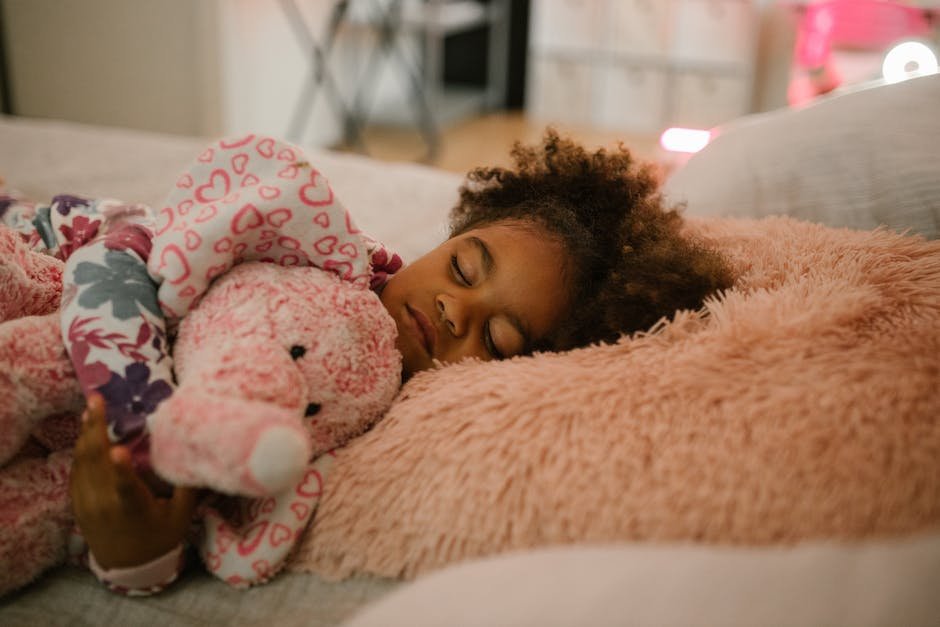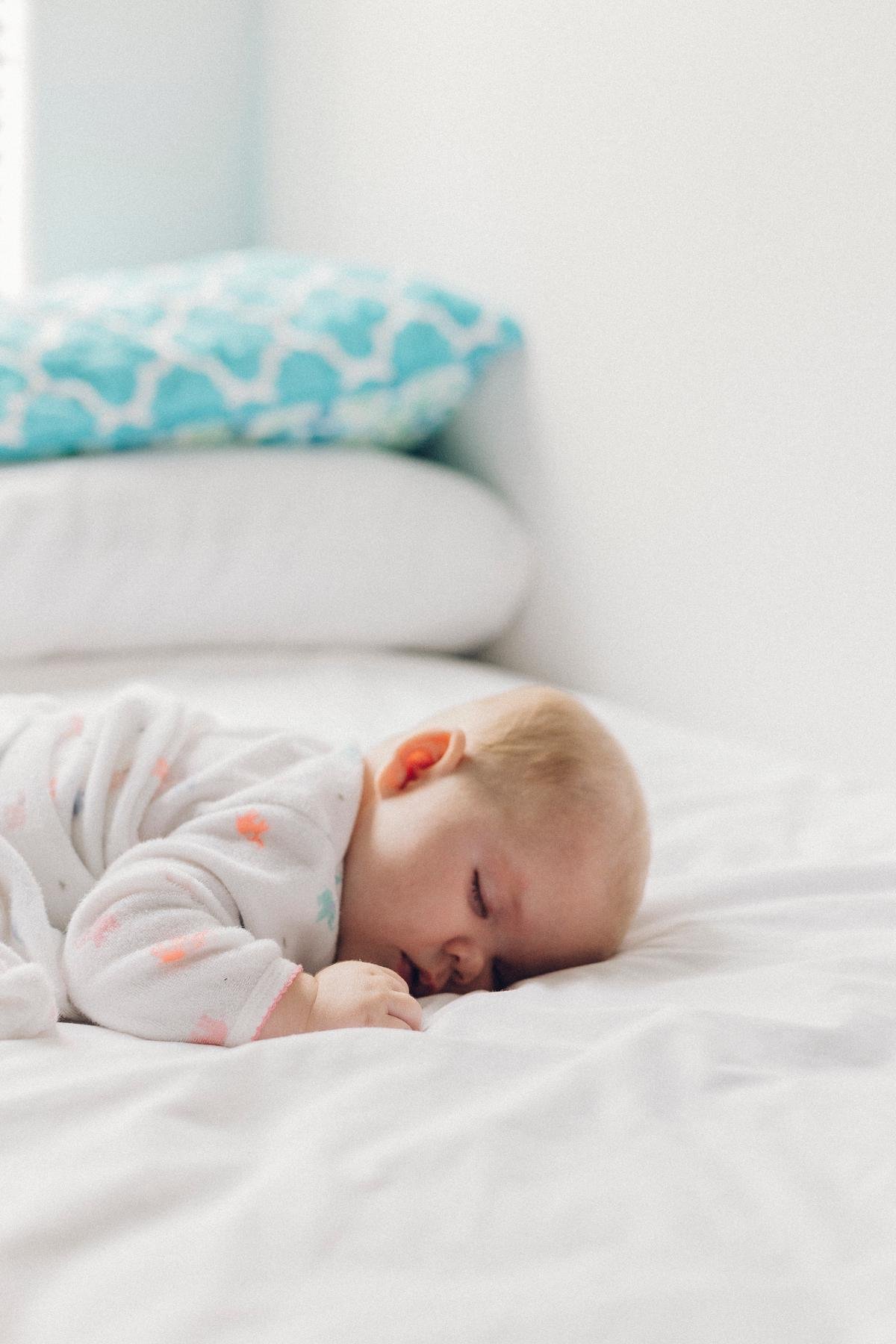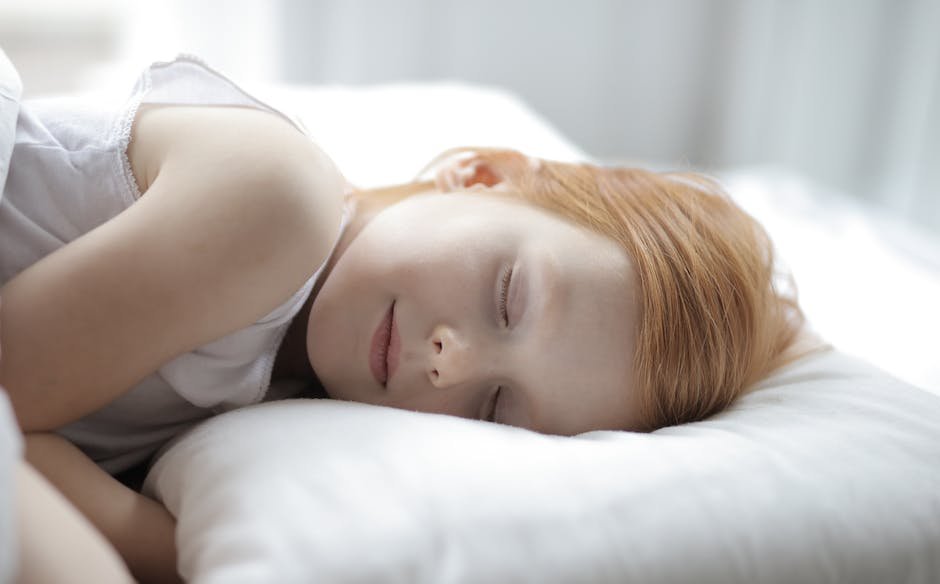
Sleep, a fundamental human need, remains a complex puzzle for individuals with autism and their caregivers. The prevalence of sleep disorders in children and adults with autism has led to an upsurge in research to understand the underpinnings of this issue. This investigation aims to delve into multiple aspects of sleep disruptions in autism, including the link to sleep disorders, biological factors, the impact of environmental influences, behavioral connections, and viable interventions. It explores the common sleep disturbances seen in autism, such as insomnia, irregular sleep patterns, and nighttime awakenings, and attempts to decipher the potential causes behind them.
The link between autism and sleep disorders
The Intricate Connection Between Autism and Sleep Disorders: A Closer Look!
Delving into the realm of parenting, especially regarding special needs, can be challenging. It’s a well-known fact that children with Autism Spectrum Disorder (ASD) have a higher likelihood of experiencing sleep disorders. To effectively support our loved ones who have autism, let’s endeavor to understand the relationship between autism and sleep disorders, and how they’re often intertwined.
Autism isn’t accompanied by an instruction manual, and there’s a delightful uniqueness to every child on the spectrum. Sleep problems, though not inherent to autism, are undeniably more common among these kids, with anywhere between 40% to 80% grappling with various sleep disorders. Understandably, these sleep issues can bolster the challenges our lovely kiddos face day-to-day and, in turn, can affect the entire family’s harmony.
Why is sleep so important, anyway? Sleep isn’t just a period of rest; it’s a critical time for growth, development, and body repair. When sleep disturbances are frequent, they can profoundly impact behavior, attention, memory, and overall health. For kids on the spectrum, a good night’s sleep can be a gamechanger, nudging transformable improvements in daily life.
So, let’s unravel the principal reasons why autism and sleep disorders are often bedfellows:
- Biological Factors: Certain autism-related biological conditions like epilepsy or gastrointestinal issues can cause interrupted sleep. Research also indicates a possible correlation between abnormal melatonin production – the hormone governing our sleep-wake cycles – and autism.
- Sensory Sensitivities: We are all aware of the heightened or reduced sensory perceptions of ASD children. This sensitivity can interfere with their sleep, making them more responsive to night-time noises or discomfort from clothing or bedding.
- Anxiety: Children with autism tend to experience higher levels of anxiety, which can make falling asleep or staying asleep increasingly difficult.
- Medication: Sometimes the medications prescribed to manage autism symptoms can, unfortunately, have side-effects inclusive of sleep disruption.
Given the high prevalence of sleep disorders among our ASD-folk, early identification coupled with appropriate intervention can be truly life-altering. Working alongside healthcare professionals, parents can strategize effective sleep practices and routines that suit their child’s unique needs.
Understanding the connection between autism and sleep disorders marks the beginning of better navigating this challenging terrain. Remember, you’re not alone in this journey. Keep faith, be patient, and most importantly, celebrate every little victory along the way! Remember, every sunrise brings a new day filled with opportunities. With love, patience, and persistence, restful sleep for our little ones is a reachable star!
Kudos to all the wonderful parents and caregivers who work tirelessly to provide a nurturing, low-stress environment for our kids on the spectrum. Let’s continue to build this beautiful community, one where encouragement, understanding, and mutual support take center stage!

Possible Biological Factors
Biological Factors: A Deeper Dive into Sleep Disruption in Autism
If you’re a parent of a child with Autism Spectrum Disorder (ASD), you likely already know about the complexities of this condition, especially concerning sleep disruptions. These children often have a high prevalence of sleep disorders, making nights a constant challenge. While we’ve touched on their connection to biological elements like epilepsy, gastrointestinal issues, and abnormal melatonin production, this article delves deeper into these aspects. It highlights how understanding these factors can help create a more conducive sleep environment for your little one.
To start, epilepsy occurs more frequently in children with ASD and has a profound influence on sleep patterns. Seizures can disrupt sleep, leading to a circadian rhythm that’s out of sync. This irregular sleep-wake cycle makes it difficult for children with autism to fall asleep and stay asleep during the night. Understanding if epilepsy factors into your child’s sleep issues can help inform appropriate interventions and guide medical treatment.
Next, let’s consider gastrointestinal issues – a common feature in many children with ASD. Conditions like constipation, reflux, and other digestion-related disorders can lead to discomfort, causing frequent awakenings or difficulty falling asleep. Parents, understanding these digestive difficulties and working with a healthcare provider to manage them can significantly improve your child’s sleep patterns.
Abnormal melatonin production is another critical factor in ASD. Melatonin, often termed the ‘sleep hormone,’ regulates the body’s sleep-wake cycle. Many children with ASD have been found to have irregularities in melatonin levels, which can interfere with their ability to fall asleep or maintain sleep throughout the night. A healthcare professional can provide guidance on the appropriateness and administration of supplemental melatonin, if needed.
Sensory sensitivities also play an essential role in sleep disturbances in children with autism. If a child is hypersensitive, they might find the usual night noises, or the touch of their bedding, overwhelming, making it harder to fall asleep. On the other hand, if your child is hyposensitive, they might crave sensory input, making it challenging to stay in bed. In this case, weighted blankets or noise machines might help create a soothing environment.
Anxiety, too, impacts sleep. Children with ASD often encounter heightened anxiety levels which can hinder the process of falling asleep. Relaxation techniques and predictable bedtime routines may help assuage these anxiety levels.
Lastl, consider any medication your child might be on, as some used in managing autism symptoms can contribute to sleep problems. Engage with your healthcare provider for possible adjustments or alternatives that might improve sleep.
While the challenges may seem overwhelming, remember, understanding these biological factors influencing your child’s sleep issues is the first step towards managing them. Working closely with healthcare professionals, developing effective sleep practices, and continually learning more about your child’s unique needs are all part of this journey. Parenthood, after all, is a beautiful, albeit complicated, dance of love, patience, and resilience.
Despite its hardships, know that there’s a vast community of parents navigating the same challenges, full of advice, comfort, and reassurance. You’re not alone on this journey.

The Impact of Environmental factors
Unravelling the Influence of Environmental Factors on Sleep Disruptions in Autism
Let’s delve deeper into the complex web of how environmental factors could stir sleep disruptions in our incredible children diagnosed with Autism Spectrum Disorder (ASD).
To begin with, it is critical to understand the broad umbrella that encompasses ‘environmental factors’. This term could revolve around physical characteristics of the immediate environment where the child sleeps – including light, noise, temperature, color palette, and the overall setup. Additionally, it merges the daily routines, family dynamics, and other external triggers that could affect the child’s sleep hygiene.
Within the warmth of our homes, the surroundings where children with ASD sleep can etch a significant mark on their sleep patterns. Factors such as the brightness or harshness of lights to even the level of noise could potentially disturb their sleep. Moreover, stark contrasts in room temperatures might also lead to frequent wakefulness or difficulty in falling asleep.
Further, the interactive dynamics of daily routines and family life can actively influence the sleep patterns of children with ASD. For instance, inconsistent bedtimes, high-stimulation activities near bedtime, or even high-stress family environments may lead to increased sleep disruptions.
Bedroom comfort for children with ASD can’t be understated. The choice of bedding materials, colors, and room decor might affect sensory-sensitive children. Striving for a sensory-friendly environment, catering to their individual sensory differences, reduces the likelihood of encountering sleep disturbances.
Moreover, exposure to screens before bedtime can have a profound influence on the sleep quality of children with ASD. Screen time, especially in the evening, can alter the natural sleep-wake cycle, making it tricky for children to settle down and have a restful sleep.
Furthermore, certain hidden environmental toxins and allergens can surreptitiously be at play. Whether it’s mold, dust mites, or harsh synthetic fragrances, these silent sleep invaders can potentially intrude sleep, especially for children with ASD who might have heightened sensitivities.
Indeed, understanding the environmental factors is only one piece of the puzzle. The complexity of sleep disruptions often demands a comprehensive approach. The crux lies in adapting, reshaping, and tweaking environmental factors based on the individual needs of the child.
One step at a time, integrating these small changes may gradually improve the sleep quality of children with ASD. Consulting with occupational therapists, allergists, or sleep consultants can provide essential guidance in maneuvering this multifaceted challenge.
So, dear parents and caregivers, although the journey may seem tough, remember, you’re not alone. Be patient and persevere – for every small step gets you closer to helping your wonderful child have the sweet dreams they truly deserve.

Photo by shravankacharya on Unsplash
Behavioural Connections
Upon identifying and understanding the exciting yet demanding pathways of nurturing a child with Autism Spectrum Disorder (ASD), it becomes crucial to shine a light on the potential effects that the environmental factors can have on a child’s sleep patterns. It might seem daunting at first glance, but deploying your parental instincts and a handful of experts’ advice can make a world of difference.
Considering the nature of autism, children with ASD are often more keenly aware of environmental factors that disturb their sleep. Among these, certain physical characteristics of the sleep environment can particularly be triggering. Lights, noise, temperature, and even the color palette of a child’s room are potential catalysts for sleep disruption. A dark, quiet, and cool room can create an ideal sleep environment. Even certain colors, like shades of blue or green, are known to have a calming effect, promoting peaceful sleep.
Maintaining regular daily routines can help children with ASD to feel secure and understand expectations, which can drastically improve their sleep patterns. It’s worth noting here that creating a healthy family dynamic that promotes good sleep hygiene can also benefit these children. Encourage activities that wind down excitement levels as bedtime approaches and consistently practice these routines to ease bedtime transitions.
The comfort of the child’s bedroom is another core aspect to monitor. It’s easy to forget that children with ASD might be extra-sensitive to tags on their pajamas or to the texture of their sheets, and these seemingly minor discomforts can cause significant sleep disturbances. Opting for sensory-friendly apparel and bedding can pave the way for a more comfortable and less disruptive sleep.
In this digital age, the impact of screen time on sleep is a considerable concern. The blue light emitted by screens can hinder the production of melatonin, a hormone critical for sleep. It’s a good practice to establish screen-free time at least an hour before bedtime.
While setting up a sleep-friendly environment, it’s also crucial to consider the hidden environmental factors. Possible toxins and allergens in a child’s sleeping environment can be a silent influencer when it comes to sleep disruption. Regular cleaning, air purifiers, and hypoallergenic bedding can contribute to creating a healthier environment for sleep.
Remember, it’s not always possible to adhere rigidly to all these changes and adjustments may need to be made based on the individual needs of the child.
Seeking guidance from professionals such as occupational therapists, allergists, and sleep consultants can provide customized strategies for your child’s specific sleep issues. They can help evaluate the challenges and suggest effective solutions reminding you that you are not alone in this journey.
Remember that patience is paramount when navigating through these processes. Celebrate the tiny wins of each peaceful night. The essence of parenting lies not just in moulding the family’s life around the child, but also evolving alongside them. Keep being the awesome parent you already are, ensuring your child navigates through life, as peacefully as they do through the night.

Photo by thedakotacorbin on Unsplash
Interventions for sleep disturbances in autism
Understanding Sleep Disturbances: Navigating Practical Interventions
Navigating the world of parenting is a journey filled with highs and lows. It’s even more magnified when raising a child with Autism Spectrum Disorder (ASD), given the unique challenges such as sleep disturbances prevalent among these children.
When it comes to addressing these issues, there are concrete strategies which can be utilized to nurture healthier sleep habits. Remember, each child is unique, what works for one might not work for another. Patience, perseverance, and a lot of love are necessary in this endeavor.
Creating a Bedtime Routine: The Power of Predictability
Instilling a predictable, structured bedtime routine is a proven tool for improving sleep quality. It could be as simple as bath, book, and bed. The key is consistency; doing the same activities in the same order every night. This cues the child’s body that it’s time for sleep.
Comfort is Key: Sensory-friendly Bedding and Sleepwear
Consider choosing bedding materials and sleepwear that cater to your child’s sensory preferences. It may be a weighted blanket, soft cotton sleepwear, or a specific pillow. Ensuring the bed is a comfortable, inviting space is integral to promoting better sleep.
Harnessing Nutrition: Food Choices with an Impact
It’s often overlooked, but diet has a direct impact on sleep quality. Some children with ASD may have food sensitivities that can exacerbate sleep problems. Consulting with a registered dietitian could shed light on potential dietary changes that may improve sleep.
Regulating Screen Time: Shining a Light on the Effects
Screen use before bedtime can significantly disrupt sleep by suppressing melatonin, the sleep-inducing hormone. Establishing a screen-free period before bed and removing electronic devices from the bedroom can greatly improve sleep.
Encourage Physical Activity: Burn off Energy to Sleep Better
Engaging in regular physical activity is a natural way to promote better sleep. It not only helps tire the body but also reduces stress and anxiety, which are often barriers to sound sleep. Incorporating daily physical activities that your child enjoys could make bedtime less of a battle.
Professional Guidance: Seeking Expert Tips
Remember, it’s absolutely okay to ask for help. Sleep consultants, occupational therapists, allergists, or other healthcare professionals can provide expert insights tailored to the particular needs of your child.
To conclude, helping children with ASD overcome sleep disturbances takes patience, education, and a solid dose of trial-and-error. However, with the right tools and strategies coupled with more awareness and empathy, sleep disturbances can be manageable. As you journey through this, always remember to celebrate every small victory along the way. Progress may be slow but each step is a positive stride towards better sleep for your child and peace of mind for you. Let’s navigate these challenges together, creating a parent community that supports and uplifts each other. Sweet dreams!

The journey into understanding autism and its connection with sleep disruptions is continually evolving, encompassing a vast array of factors from genetic to environmental influences. Exploring behavioral patterns, acknowledging sensory sensitivities, and embracing daily routine modifications can make a significant difference in navigating sleep challenges. Although sleep disturbances in autism can be a daunting aspect to deal with, inroads made by ongoing research and practical interventions offer hope. From behavioral modifications to melatonin usage, these can potentially improve sleep quality, overall well-being and day-to-day life for individuals with autism and their loved ones.




